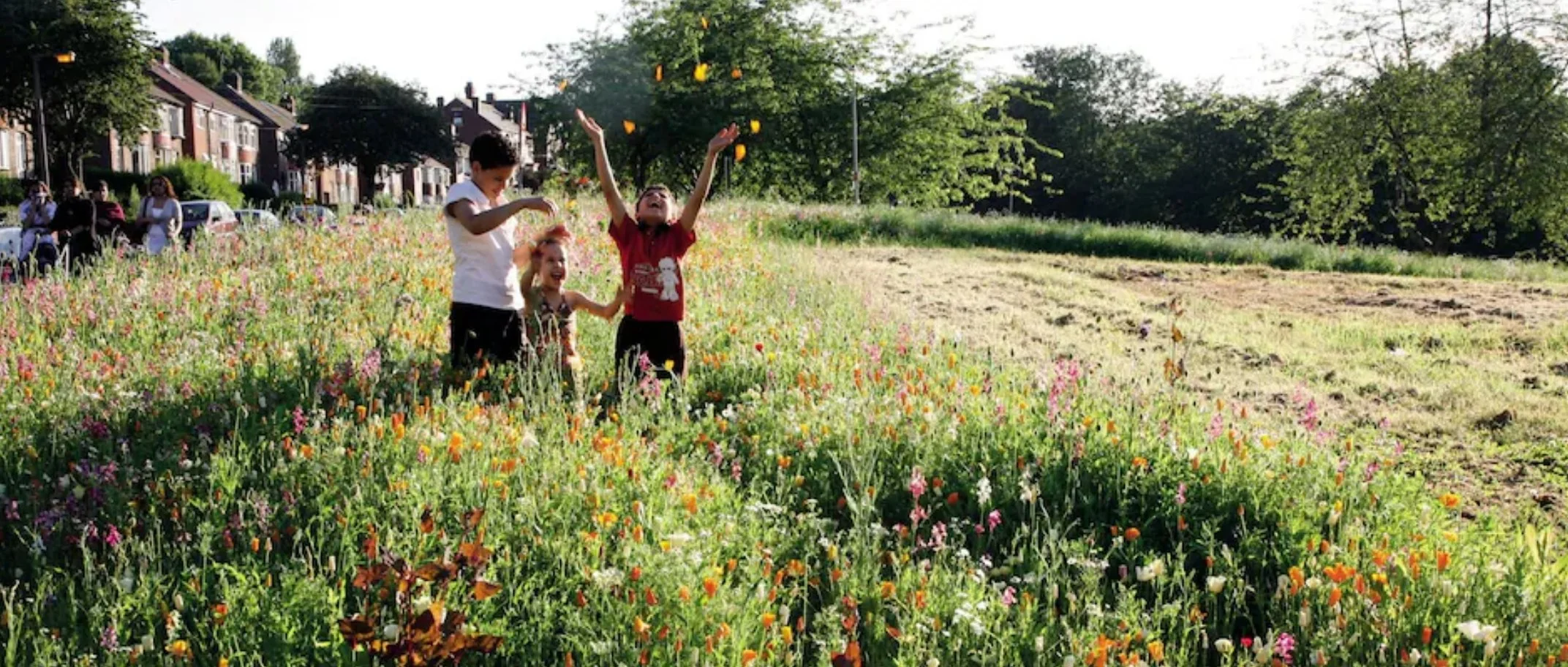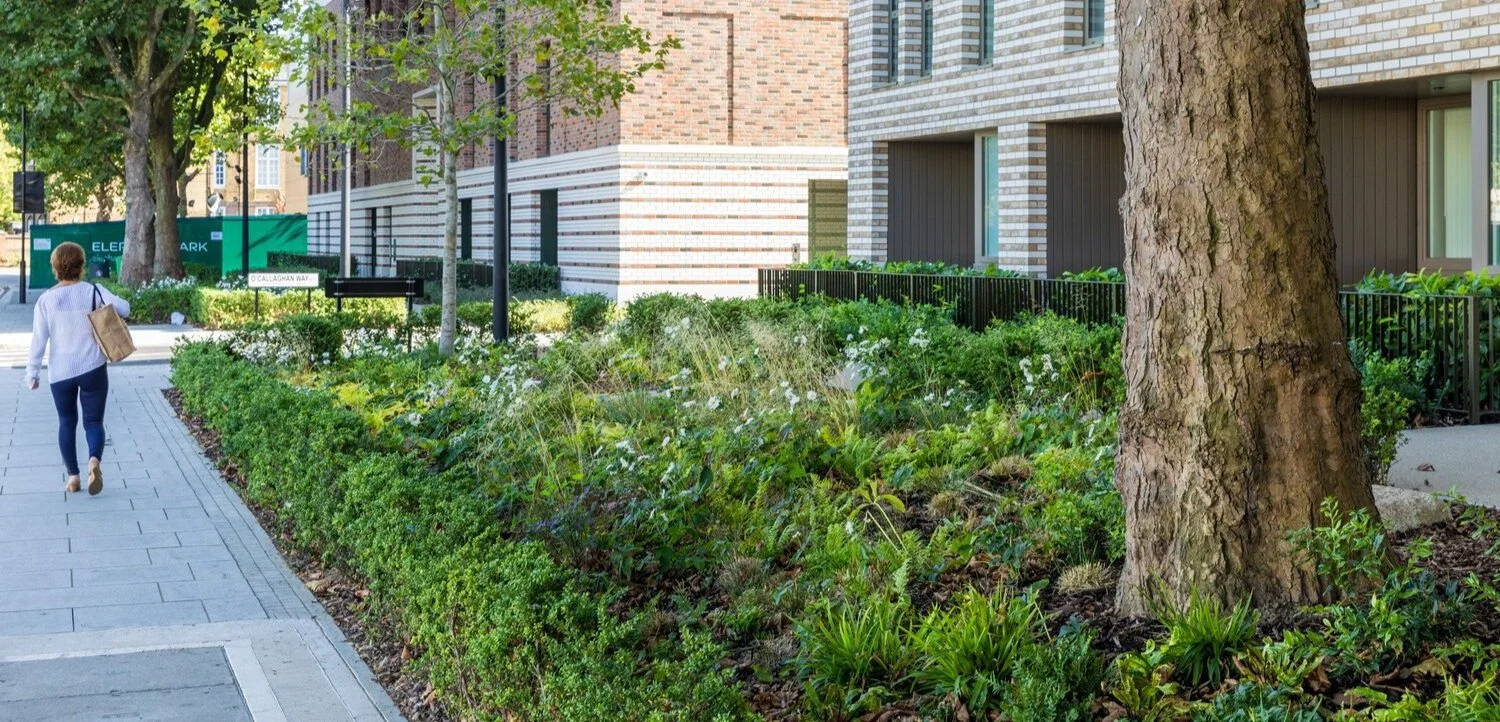Introduction to Ebbsfleet's
Planting Guidance
Ebbsfleet’s planting strategy must acknowledge the heritage of its industrial landscapes, while interpreting ‘the garden’ for this 21st Century Garden City. The city’s trees, plants and flowers are the very basis of its character, and their selection must embrace the essence of this dramatic landscape to enthuse and inspire.
The aim is to deliver planting that interprets the rich cultural heritage of Ebbsfleet’s post industrial landscapes, but also supports the infrastructural role of enhanced air and water quality, and carbon sequestration.
The vision aims to deliver vibrant, colourful and memorable planting, but a strategy that also responds to local micro-climate and soils that continue to evolve as part of wider climate change. The planting must also consider how to incorporate productive landscapes, integrate surface water management and support biodiversity.
A vision for planting in Ebbsfleet
Green infrastructure
The planting at Ebbsfleet Garden City needs to work hard to provide vital green infrastructure services. Abundant tree planting will play a key role, providing attractive green leafy routes along all streets, squares and parks, to encourage walking and cycling and social interaction. The benefits of this are multiple, improving safety, physical and mental health, helping to build new communities, and creating wildlife habitat. Benefits of street trees include:
reducing obesity, and associated diseases, through encouraging an active lifestyle
reducing asthma and other respiratory diseases, by reducing vehicular journeys and so reducing airborne particulates from vehicles
reducing airborne particulates from reaching people’s lungs, by trapping them on the street tree’s leaves
improving mental health, through the positive effects of living in a leafy green environment
reducing exposure to skin cancer, by providing shade in the summer months
supporting the development of communities, through providing streets, squares and parks which can function as social meeting spaces • supporting mental health, through providing streets that encourage people to walk and interact with their neighbours
supporting children in developing social skills, through providing a safe environment for them to access play and learn how to interact with others
reducing crime or the fear of crime, through increasing the number of people walking or cycling in the public realm
increasing biodiversity and creating wildlife habitat
absorbing carbon dioxide, and providing oxygen
shading and cooling streets and buildings in the summer, while also supporting solar gain in the winter
slowing down and absorbing rainwater
Creating a distinctive sense of place
The local area has a rich history and distinctive landscape character, which has been assessed to inform this guide. This rich heritage includes:
Agricultural history as part of the productive “Garden of England”
Industrial history, concentrated on chalk quarrying and cement production
A legacy of amazing landscape character features, notably white chalk cliffs, blue lakes, rivers, valleys and marshes
These elements provide a rich source of inspiration which can be used to guide the planting design, typologies and palettes, to celebrate the people, places and history of the site, and to create a distinctive new place. A summary of these themes is shown on the following pages.
Ebbsfleet Garden City also benefits from the green image of Garden Cities and their legacy of attractive leafy streets. Given the higher density of housing anticipated at Ebbsfleet Garden City, primarily it is the public realm that will need to deliver the “garden” that has attracted residents and helped build a sense of pride in the previous generations of Garden settlements. Additionally, the legacy of the Garden of England is a rich source of inspiration for the “Edible Ebbsfleet” initiative being developed by the Ebbsfleet Healthy New Town Team. The ambition is to grow productive food crops integrated into the public realm, encouraging residents to get involved, grow, cook and eat fresh healthy food, and get to know their neighbours.
The Garden of England heritage is also inspiration for a distinctive approach to planting which values seasonal change, and the attractive dynamic of changing features of various vegetation. The wildflower meadows that you find growing in traditional Kent orchards, provide inspiration for a loose-textured, soft and naturalistic look, with vibrant and changing colour. This can be delivered with Pictorial Meadows and other Pictorial planting approaches to create a memorable and imageable landscape.
This Planting Strategy sets out examples of how inspiration can be derived from this unique site, and shows examples of how it can be applied to planting to create a 21st Century Garden City.


